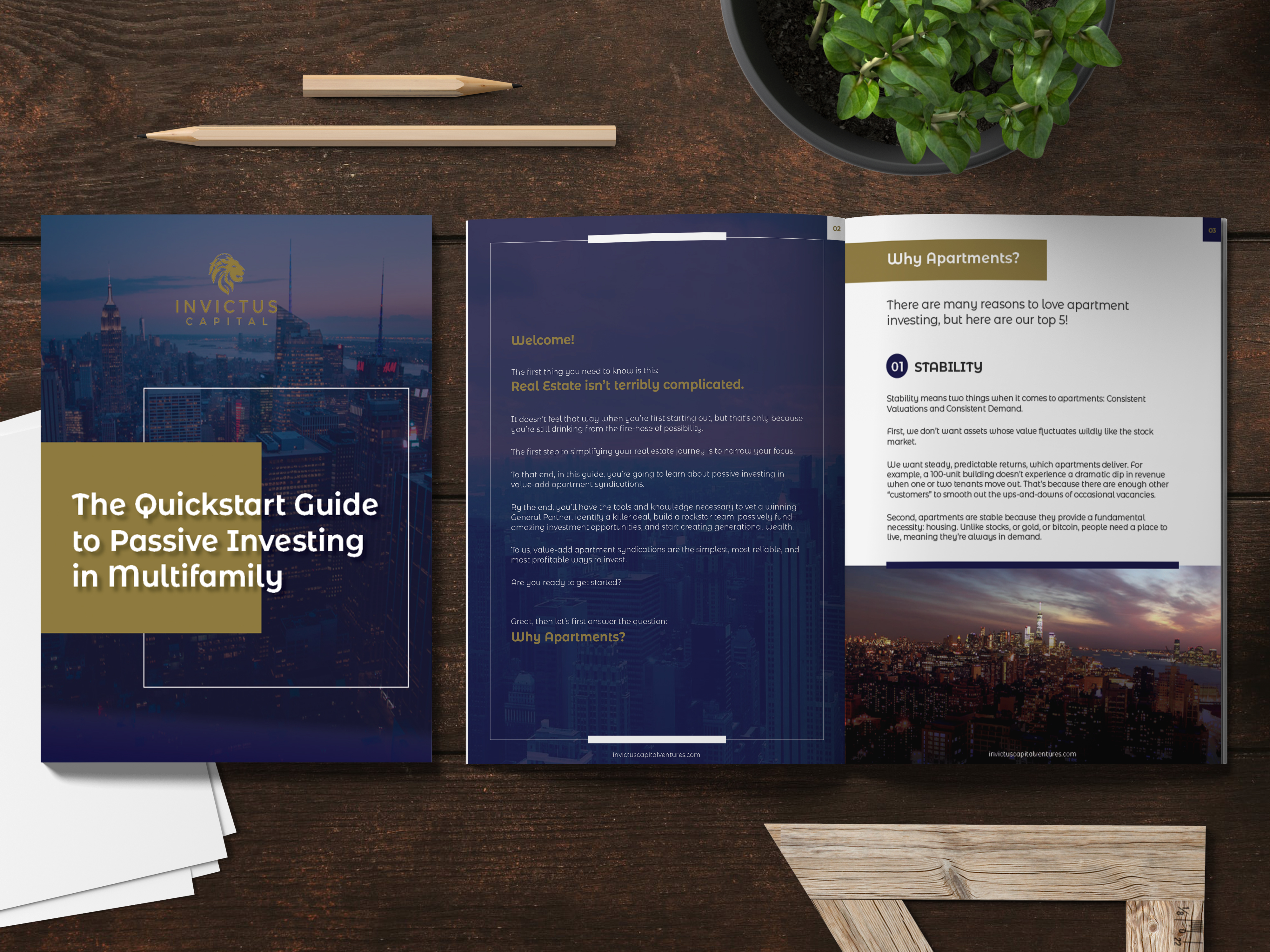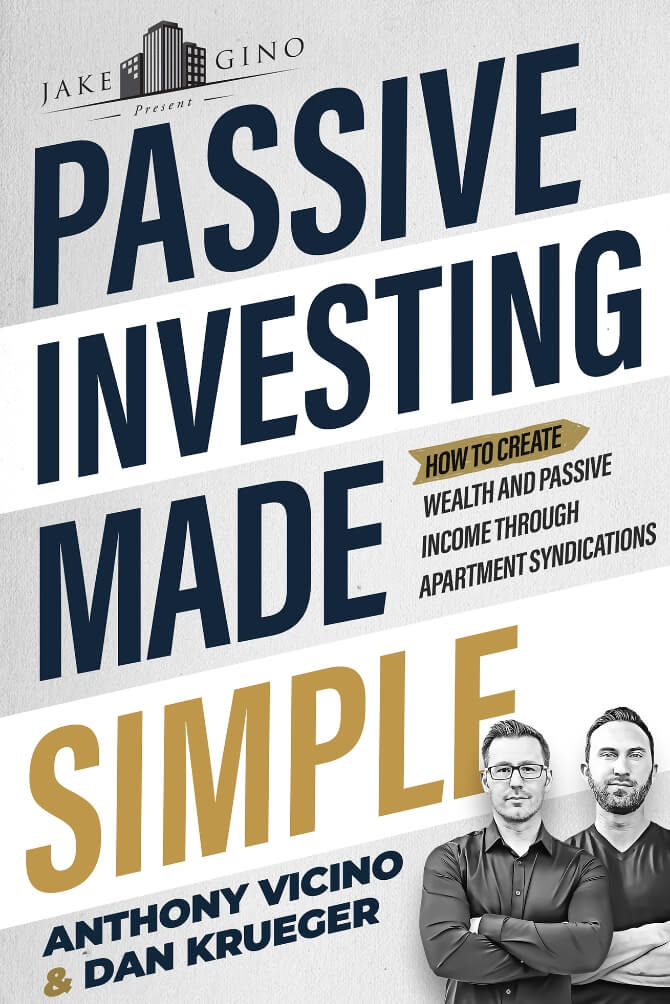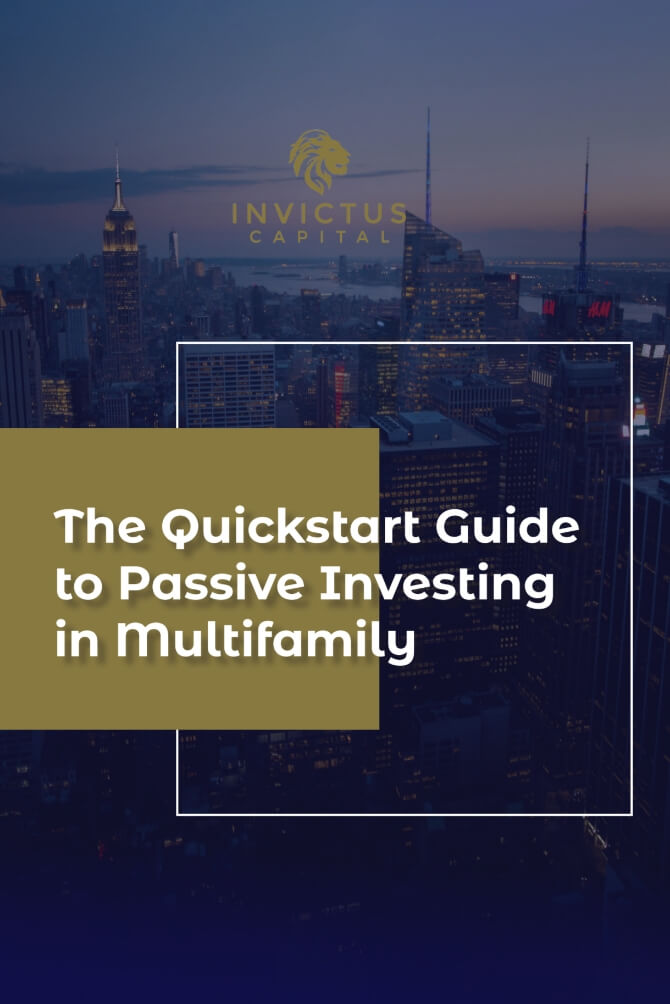Everybody is searching for the best investing strategy, but it’s a tough search, because there are hundreds of ways to build incredible wealth through real estate.
The power of this industry is that the underlying mechanics of this investment vehicle as a whole are just leveraged so powerfully in favor of generating money.
That’s not to say you can’t lose money (you can!), but if you pick a niche, put in the necessary work to master the skills necessary to succeed in that niche, and then actually execute on those skills…then over a long enough time-span, you can’t help but find success.
Okay, there’s a lot of ways to make money in real estate…but you’re here for a reason…You want to know the single best investing strategy.
Well, we’re biased, but to us, the best investing strategy is hands-down value-add multifamily apartment syndication.
Or, put in layman’s terms, we partner with passive investors to purchase apartment buildings with unrealized potential.
There are many reasons we love this asset class and the syndication model over and above the other 32,239 ways to make money in real estate, but the simplest explanation can be made by way of a metaphor.
So, let’s dive into the best investing strategy of 2021…
We call it: The Jumbo Jet Investing Strategy…
The Car
A car is a wonderful tool. It can take you and a handful of people across the country on an epic road-trip. Of course, you’re gonna have to make frequent stops for gas, coffee, and gummy bears, but if you stick with it, you can go more-or-less wherever the roads take you.
Everybody and their elderly grandmother have the ability to drive a car. The barrier to entry is incredibly low, which is frightening when you consider that we’re navigating a couple thousand pounds of worth of metal and people through time and space at high speeds.
Perhaps it’s because the barrier to entry is so low, or maybe it’s just because we’re all a bit too casual when we’re behind the wheel, but whatever the reason, the likelihood of getting into an accident is incredibly high when driving a car.
What’s this have to do with real estate?
Great question.
In this metaphor, let’s think about a car as a single-family or small-multifamily property.
These properties can be acquired with little-to-no money down, which makes the barrier to entry so low that you could trip over it and still find yourself the proud owner of a 4 bed, 2 bath little shanty.
To be clear, there’s nothing wrong with shanties. Single-family homes and small multifamily properties can be extremely profitable. For many, in fact, this is the avenue I would recommend to get started in real estate investing.
The stakes are low (by comparison to large multifamily, let’s say) and the complexity is manageable. For those wanting to learn the ropes of bank financing, managing tenants, maintenance requests, and all the myriad things one must learn to effectively manage a successful active real estate empire, this is going to be a great launching off point.
In fact, this is how I got my start. I had invested in a couple of smaller fix-n-flips that a friend was executing, but my first active step into real estate was actually by way of a triplex.
The reasoning was simple. Let’s learn all the things we need to learn in a low-risk environment. Once I understood the nuances of buying, operating, and exiting a small property, I had the confidence to start scaling.
So there’s nothing inherently wrong with smaller properties (aka a car). I know many apartment syndicators who still own a portfolio of “cars”.
But cars have some serious limitations.
First, they don’t go very fast (aka: it’s hard to scale).
Second, you always have to stay at the wheel (aka: they require active management).

Third, you’re limited in where you can reasonably go (aka: it can be difficult to scale non-local operations).
And fourth, the likelihood of getting in an accident is considerably higher than the alternatives we’re going to discuss (aka: foreclosures are highest in this asset than in any other class of real estate).
Okay, so if a car is a good starting point. Where do we go next?
Well, ideally we’re going to find something that has the potential to eliminate as many (if not all) of the limiting issues associated with SFH and small multifamily properties.
The next obvious choice, then, is to take to the air.
The Cessna
Getting a pilot’s license is significantly harder than getting a driver’s license.
There’s a rigorous education component coupled with a certain amount of time behind the stick with a qualified instructor before you qualify for your license.
Because of this higher competence profile coupled with rigid systems of control by the industry as a whole, we see that the likelihood of getting into a fatal crash in a private plane (despite the fact that, ya know, you’re flying thousands of feet off the ground and pretty much any failure will be fatal) is significantly lower than that of being in a car.
A Cessna is a beautiful thing. You can travel significantly faster, to destinations you couldn’t even reach, in a car.
Again, what’s this have to do with real estate?
Well, we think a Cessna is equivalent to a mid-size multifamily property, something in the 10-30 unit range, let’s say. You might execute a deal of this size on your own, but more commonly at this size, we start seeing joint ventures effectively utilized.
That is, you and a partner decide to pool capital and resources to take down a bigger deal.
It’s hard to overstate just how powerful this can be.
Two people (or more) can simply go so much further and faster than a single individual. The math doesn’t scale as you would suspect.
1+1 does not equal 2 in the case of a partnership. It’s 1+1=10!
We’ve personally seen the powerful effects of partnership and highly recommend it to everybody out there (even those who think of themselves being a bit of a control freak).
Finding the right partner is critical, however. Don’t just marry the first stranger you meet. Make sure that your objectives are aligned and you have complementary strengths/weaknesses.
Assuming you’ve found a great partner, you can now execute much bigger deals, and in the world of real estate investing, there are few things more impactful than the power of scale.
As the size of the buildings you acquire grows, the risk typically decreases. The most common example of this is simply due to occupancy.
A single-family home’s entire cash flow is dependent on a single unit remaining occupied. When your tenant moves out, you suddenly have 100% vacancy. That wild swing from 100% to 0% creates a lot of potential risks.
That risk is mitigated in the example of a 20-unit building, where, when a tenant moves out, your occupancy only drops by 5%. That means you still have 95% of your monthly cashflow coming in, which means you are much more able to weather the inevitable ups-and-downs of occupancy.
One of the downsides of this size of asset and corresponding partnership structure is that you are still required to stay fairly active in the process. You might manage the property yourself (in which case, you’re going to remain very active), or you might find a third party property management team (in which case you run into many of the potential alignment of interest issues we discussed in the single-family example.
Unfortunately, while a 20 unit building is starting to benefit from scale, it isn’t quite large enough yet to justify the placement of a full-time on-sight property manager and maintenance crew.
That means, despite the Cessna being significantly more powerful and capable and safer than a car, it still requires you to always stay present at the stick.
Some investors don’t mind this activity. Others do.
For the investors of the world that are looking to participate in real estate to take advantage of the awesome returns and tax benefits, but that doesn’t want to take on a full-time job, we recommend getting on the Jumbo Jet.
The Jumbo Jet
aka: The Best Investing Strategy
The modern commercial passenger jet is an incredible thing.
Think about it. You could buy a plane ticket right now and be on a plane in less than 3 hours. That plane could fly you across the world in less than a day and all you have to do is get cozy in a seat, watch a movie, and let the flight attendant know if you’d prefer the chicken or salad dinner.
And all of that occurs in a stress-free environment despite the fact that you are hurtling across the globe at blistering speeds in a vehicle you probably know very little about.
Are you stressed? Perhaps at take-off and landing, but unless you hit some turbulence, it’s unlikely you’ll ever worry much about potentially crashing.
That’s the safety, convenience, and comfort we’ve come to expect from the jumbo jet.
In the world of real estate, the Jumbo Jet is a large multifamily syndication (50+ units), or, put slightly differently: The BEST investing strategy.

Limited Partners in apartment syndications are much like the passengers on a large commercial airline. They contribute funds to the operation of the investment vehicle, take their seat, and enjoy the ride while the General Partners pilot the craft, navigating the skies and executing the travel plan by way of years worth of experience, education, and key partnerships.
The end result is the entire group of investors can travel further, with less work, and more safely than they could in any other investment vehicle.
Why are large multifamily syndications typically safer than the alternatives?
Many of the same reasons that made the Cessna a better risk-adjusted-investment-vehicle than the car hold true for large multifamily syndications.
The scale of units lends itself towards natural stability as individual vacancies don’t really have the ability to drastically affect the overall cashflow in a meaningful way.
Also, the size of these assets makes it easier to justify having on-site property managers and maintenance crews. The natural effect of this is better service to the tenants (which leads to less turnover) and lower overall operational expenses (which leads to better NOI and cashflow!).
But those aren’t the only reasons an apartment syndication has the best risk profile, and it has to do with the loan guarantors.
In a syndication, the Limited Partners are not expected to co-sign on the banknote, unlike in a Joint Venture where all parties would be on the hook for the maintenance of the loan should something go awry.
The only parties signing on the loan are the General Partners, which is even better than in our Jet example. The closest comparison you could get here is if the pilots were forced to go down with the ship, but the passengers had some magical teleportation device to safely transport them back to the ground.
That’s not to suggest apartment syndications are risk-free for Limited Partners, however. There is a very real risk of losing the entirety of one’s investment in the asset.
The Best Investing Strategy
Ultimately, how you choose your investment vehicle will largely depend on your personality and investment goals.
There is no one-size-fits-all single best investing strategy.
This is one of the reasons this industry is so amazing, there are countless ways to generate legacy wealth and achieve financial security.
The key is to figure out what’s going to be the best investing strategy for YOU.
For investors who are at the beginning of their investment career and don’t have piles of capital sitting around, going the active route of buying a single-family house to fix-n-flip might be a great way to get the flywheel started.
Then, as they start gaining momentum and resources, they might start to consider Joint Venturing to take down some larger projects. The greater returns enabled by operational efficiencies and scale are like jet-fuel to an investment.
Sooner than you might imagine, these investors start looking at their portfolio and realizing they can achieve similar returns with far less work by joining forces with rock star operators.
That’s where we come in!
Hopefully, this has helped pierce the veil of real estate investment tracks and brought you one step closer to taking action and jumping in. If you have questions, shoot me an email at anthony@invictusmultifamily.com. We’d love to hear about your investment goals!


